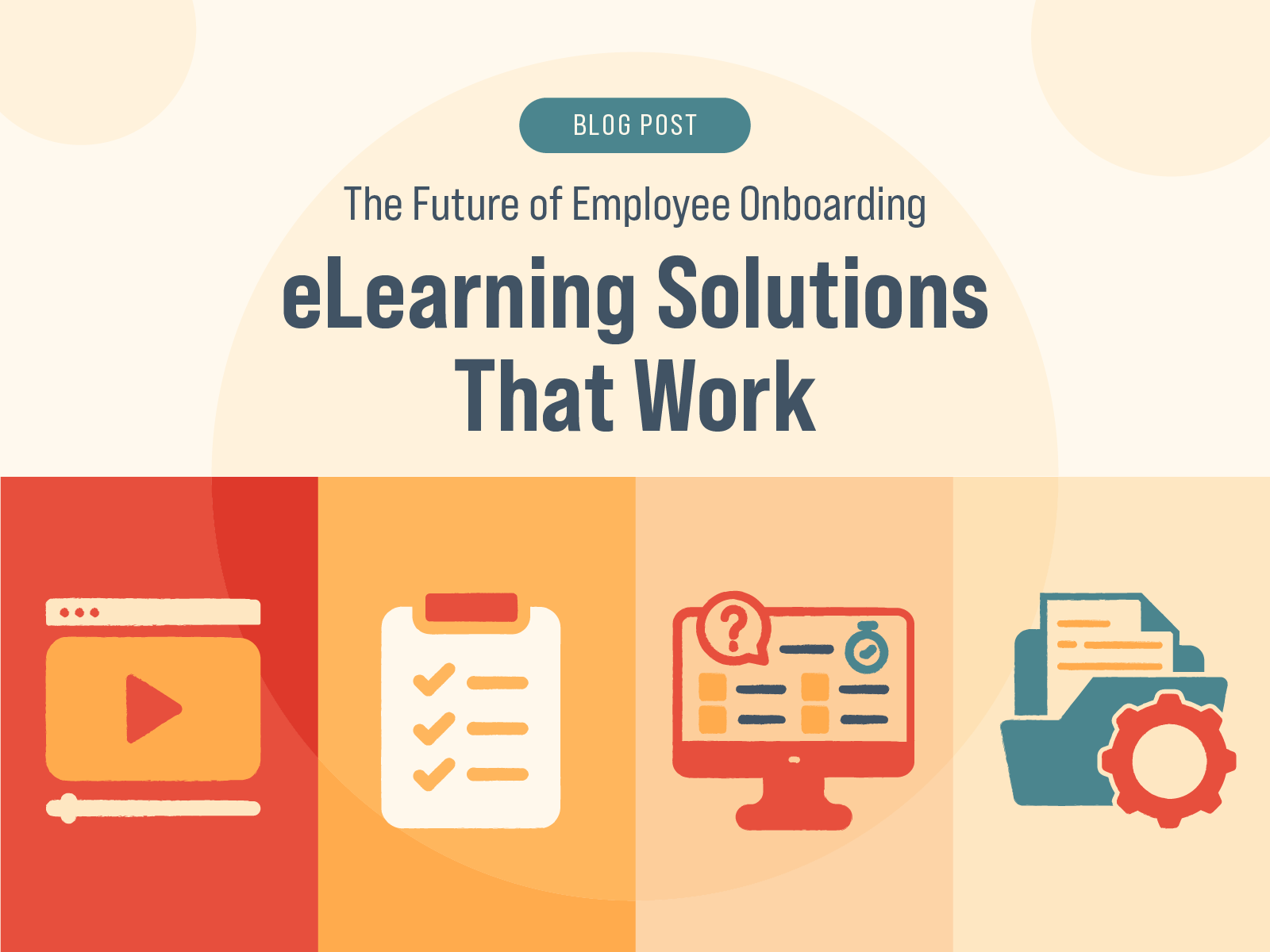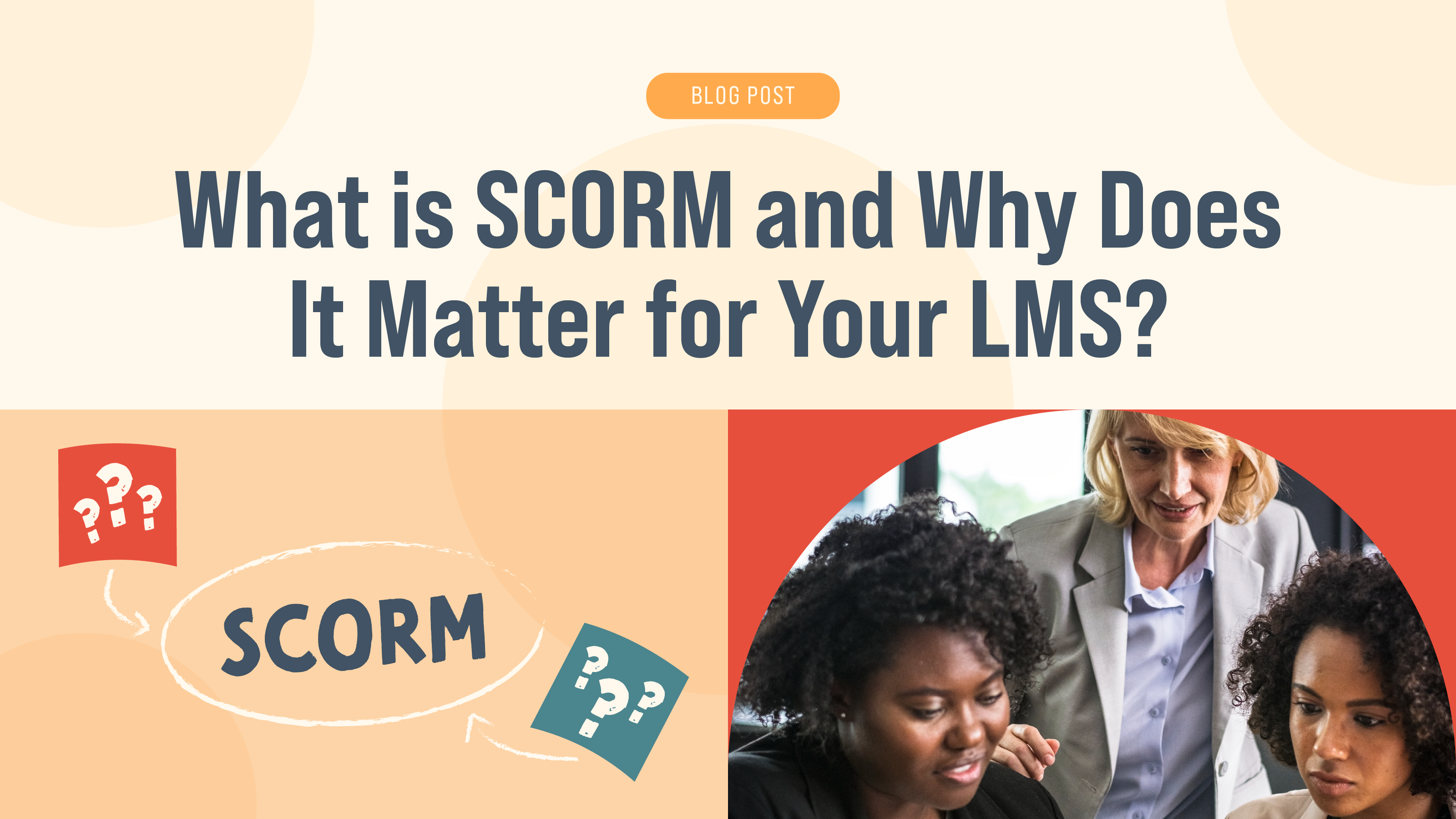How to leverage ChatGPT for eLearning Applications
The future is here! Scary, right? Well don’t panic, because there are some amazing ways we can harness modern technology breakthroughs to enhance our eLearning and corporate training! Let’s look specifically at ChatGPT today and see how we can utilize it for Instructional Design.

What is ChatGPT?
ChatGPT is a language model developed by OpenAI. It is an AI-powered conversational agent that can understand natural language and generate human-like responses to a wide range of questions and topics. As a language model, ChatGPT has been trained on large amounts of data, allowing it to generate contextually appropriate responses to various queries. It can be used for a variety of applications, including customer service, chatbots, and virtual assistants... or in our case, eLearning!
Simply put, you can ask it anything and it will generate a conversational response.
More simply put, this robot has read lots of stuff on the internet, so it can answer all sorts of questions.
How Can ChatGPT be Used for eLearning?
ChatGPT can be leveraged in a number of ways while writing corporate training and developing e-learning content. Here are some ideas:
Content generation:
ChatGPT can be used to generate script content for e-learning courses. For example, you can provide ChatGPT with a topic or a set of questions related to a particular subject, and it can generate text-based content that can be used for training or e-learning. For example, are you having a hard time defining a difficult concept in easy-to-digest terms? Ask ChatGPT to “explain quantum computing in simple terms.”
Personalized learning:
ChatGPT can be used to create personalized learning experiences for individual learners. Based on the learner's past interactions with the chatbot, ChatGPT can suggest additional resources or provide targeted feedback to help them achieve their learning objectives.
Interactive learning:
ChatGPT can be used to create interactive experiences for learners. For example, you can program ChatGPT to ask learners questions or provide prompts that they can respond to, helping them to engage more deeply with the material. This is a modern way to create simulations that are usually embedded within courses. (Note: some LMSs still don’t have the ability to track activity outside of a course, but many, many do!)
Evaluation:
ChatGPT can be used to evaluate learners' knowledge and understanding of a particular topic. For example, you can program ChatGPT to ask learners quiz questions or to prompt them to write short responses to demonstrate their understanding of the material.
Support:
ChatGPT can be used to provide learners with support and guidance as they progress through an e-learning course. For example, you can program ChatGPT to provide tips and strategies for mastering a particular topic or to answer common questions that learners may have.
Using ChatGPT for Instructional Design
Let's explore some strategies for developing onboarding training using ChatGPT:

Identify essential onboarding topics:
Begin by pinpointing the critical subjects that new employees should be familiar with during their onboarding process. This might encompass aspects such as company culture, policies and procedures, job responsibilities, and opportunities for training and development.

Compile a list of common questions:
Compile a comprehensive list of common questions that new employees are likely to have about each of these onboarding topics. Examples include, "What are the company's core values?" or "How do I go about submitting an expense report?"

Train ChatGPT:
Provide ChatGPT with the necessary information and feedback to train it on these questions and topics. This involves feeding it relevant content and refining its responses based on feedback.

Conduct user testing:
Gauge the effectiveness of ChatGPT's responses through user testing. Encourage new employees to interact with ChatGPT and offer feedback regarding their experience. You may also want to bring in Onboarding SMEs or Brand Ambassadors for this step if available.

Analyze results:
Examine the results of the user testing to identify areas where ChatGPT may need enhancements and determine if additional training resources are required.

Iterate and refine:
Based on the results of the user testing, make updates and improvements to ChatGPT's responses and training materials to enhance the overall onboarding experience for new employees.

Measure effectiveness:
Finally, measure the effectiveness of ChatGPT as an onboarding training strategy by tracking metrics such as employee retention, productivity, and satisfaction.
Conclusion
In a world driven by constant tech advancements, the pace of change can sometimes feel overwhelming. Adopting new technology can indeed be intimidating, but it is also a doorway to transformation and growth. As we've explored throughout this blog, the realm of eLearning is no exception. The potential for modernization and taking learning and development to the next level is not just a tantalizing prospect; it's a necessity in today's ever-evolving educational landscape.
Allegro Media Design stands ready to be your partner in this exciting journey. With a wealth of experience in harnessing cutting-edge technology to create engaging, effective, and customized eLearning solutions, we can turn the intimidating world of new technology into an accessible avenue for your learning and development needs.
The digital age is upon us, and with Allegro Media Design, you can confidently embrace it, driving your educational endeavors to new heights!
More Articles


Gamification in eLearning: Why It Works and How to Implement It

The Future of Employee Onboarding: eLearning Solutions That Work

What is SCORM and What Does it Matter

Accessibility in eLearning: Why It’s Essential and How to Achieve It

Microlearning: Bite-Sized Training for Big Results

Soft Skills Training Through eLearning: Building Better Leaders

How to Write Learning Objectives for eLearning Courses

When to Outsource Your eLearning Development (and How to Choose the Right Partner)

Employee Engagement in 2025: How eLearning Can Help

Training for a Multigenerational Workforce: Meeting Everyone’s Needs

The Future of eLearning: 4 Trends Shaping the Industry

How To Find the Right eLearning Developer

What Makes eLearning Effective?

Transform Your eLearning with the Magic of Animation

How to Use Audio to Enhance eLearning

Boost Learning Efficiency with Microlearning

Give Your Dated eLearning a Fresh Facelift

The Process of eLearning Part 5: The Implementation Phase

The Process of eLearning Part 4: The Development Phase

The Process of eLearning Part 3: The Design Phase

The Process of eLearning Part 2: The Analysis Phase

The Process of eLearning Part 1

Empower Your Workforce with Self-Paced Training

Elevate Your Training with Exceptional Visual Design

Taking the Confusion Out of SCORM

Embrace Efficiency: The Power of Outsourcing Your eLearning Production

Mastering eLearning: Elevating Corporate Training Through Scenario-Based Learning

Converting ILT to vILT: Embrace the Virtual Shift

Spice Up Your Boring Corporate Training With Animated Videos Copy

From Concept to Clicks: The Crucial Role of eLearning Developers

Lost in Translation: Mastering Multilingual eLearning

Training Crossroads: ILT or eLearning – What's Your Strategy?

How to Transform Boring Compliance Training

Last-Minute Crunch? Allegro Media Delivers Rapid eLearning Solutions Just-In-Time!

The Art of Chunking (or How to Eat a Whale)

Zen & The Art of eLearning Maintenance: Finding Harmony with Allegro Media Design

What Should I Look for When Hiring an eLearning Vendor?

Unveiling the Future of eLearning: Trends to Watch in 2024

Subject Matter Experts: Be Proud! Allegro loves you just how you are!

What in the World is an LMS?

Enhancing eLearning Engagement: The Power of Scenario-Based Interaction with Stylized 3D Motion Images

Enhancing eLearning with DALL-e: Adding Visual Reinforcement for Engaging Corporate Training

Choosing the Right Authoring Tool for Your eLearning Course

High Quality Audio is ESSENTIAL in Modern eLearning

What in the World is SCORM?

A Complete Guide to Leadership Training and Development

Benefits of Customer Service eLearning Training

14 Tips To Effectively Use Audio for eLearning Courses

10 Instructional Design Tips for Effective eLearning

Why You Should Use eLearning For Product Training

Benefits of Voice Overs for Your Business

How to Create Great eLearning Content: 9 Tips

Video Marketing for Business: 10 Benefits of Promotional Videos

Gamification in the Workplace: Why and How to Use It

5 Best Practices for Training Remote Employees

How to Avoid eLearning Burnout and Fatigue

What Is Customer eLearning Training and Why Do You Need it?

8 eLearning Sales Training Best Practices: Tips & Use Cases

How to Effectively Use Videos in eLearning

Best Practices for Remote Employees Onboarding with eLearning

Why You Should Invest in Corporate eLearning?

How Can eLearning Reduce Employee Burnout?

How to Motivate Employees to Participate in eLearning Training: 9 Tips

eLearning Trends and Predictions: 2022 Forecast

7 Reasons to Outsource Your eLearning Course Development
%20to%20Virtual%20Instructor-Led%20Training%20(VILT).jpg)
How to Convert Instructor-Led Training (ILT) to Virtual Instructor-Led Training (VILT)

12 Best Tips on How to Improve Employee Training with Gamification in 2021-2022

What Is Compliance Training and Why Is It Important for Your Business?
%20vs.%20eLearning.jpg)
Instructor-Led Training (ILT) vs. eLearning: Which Should I Choose?

The Difference Between An Instructional Designer And An eLearning Developer
















